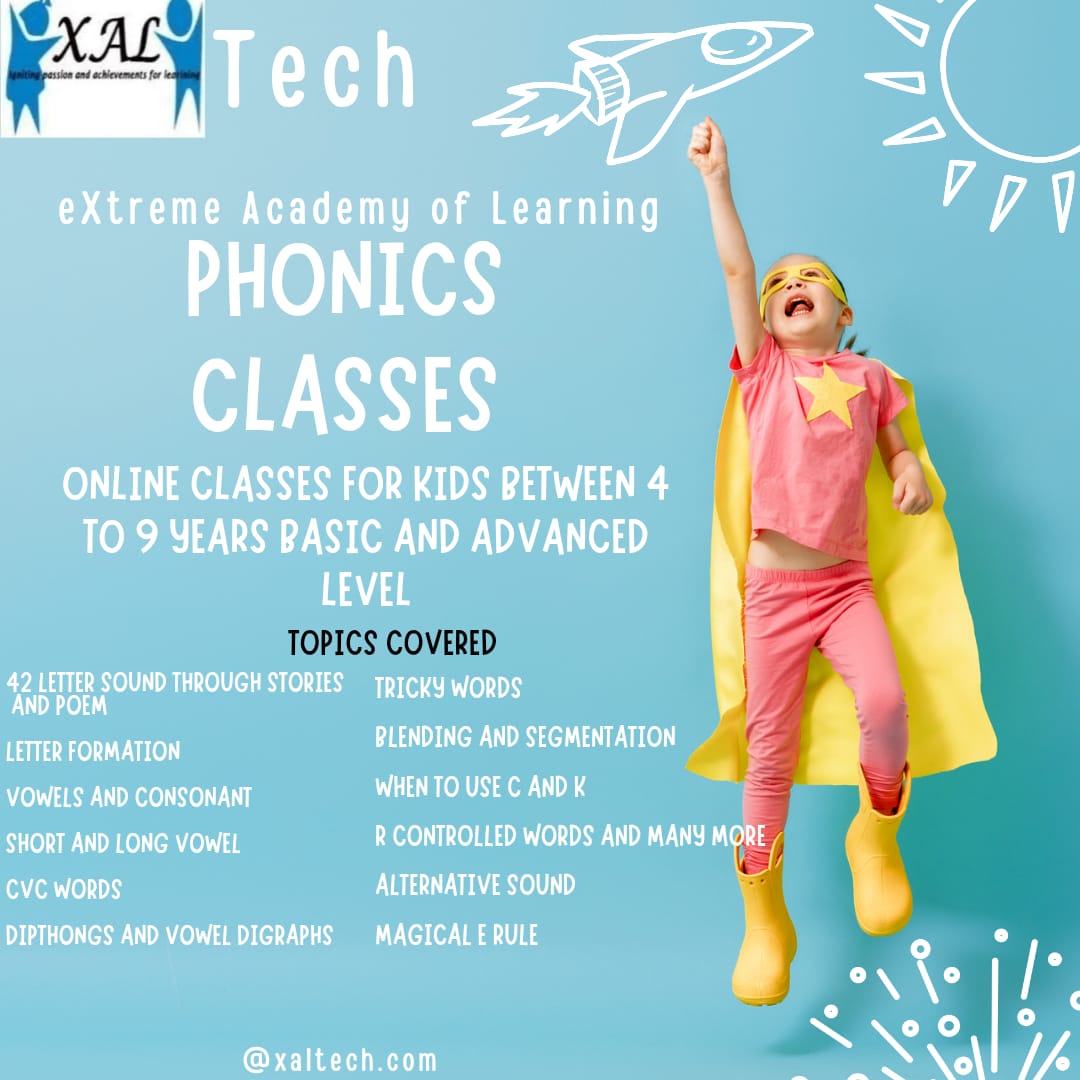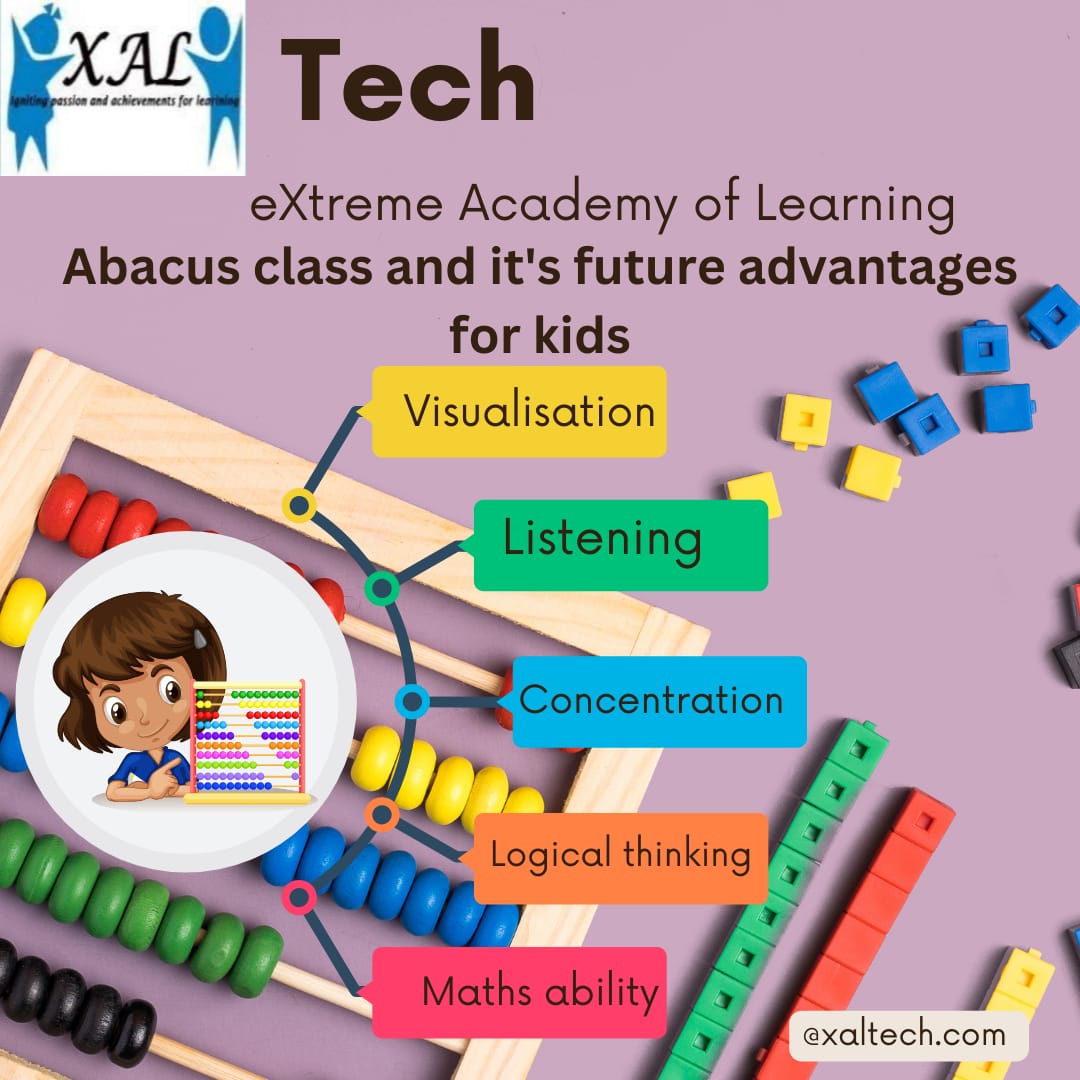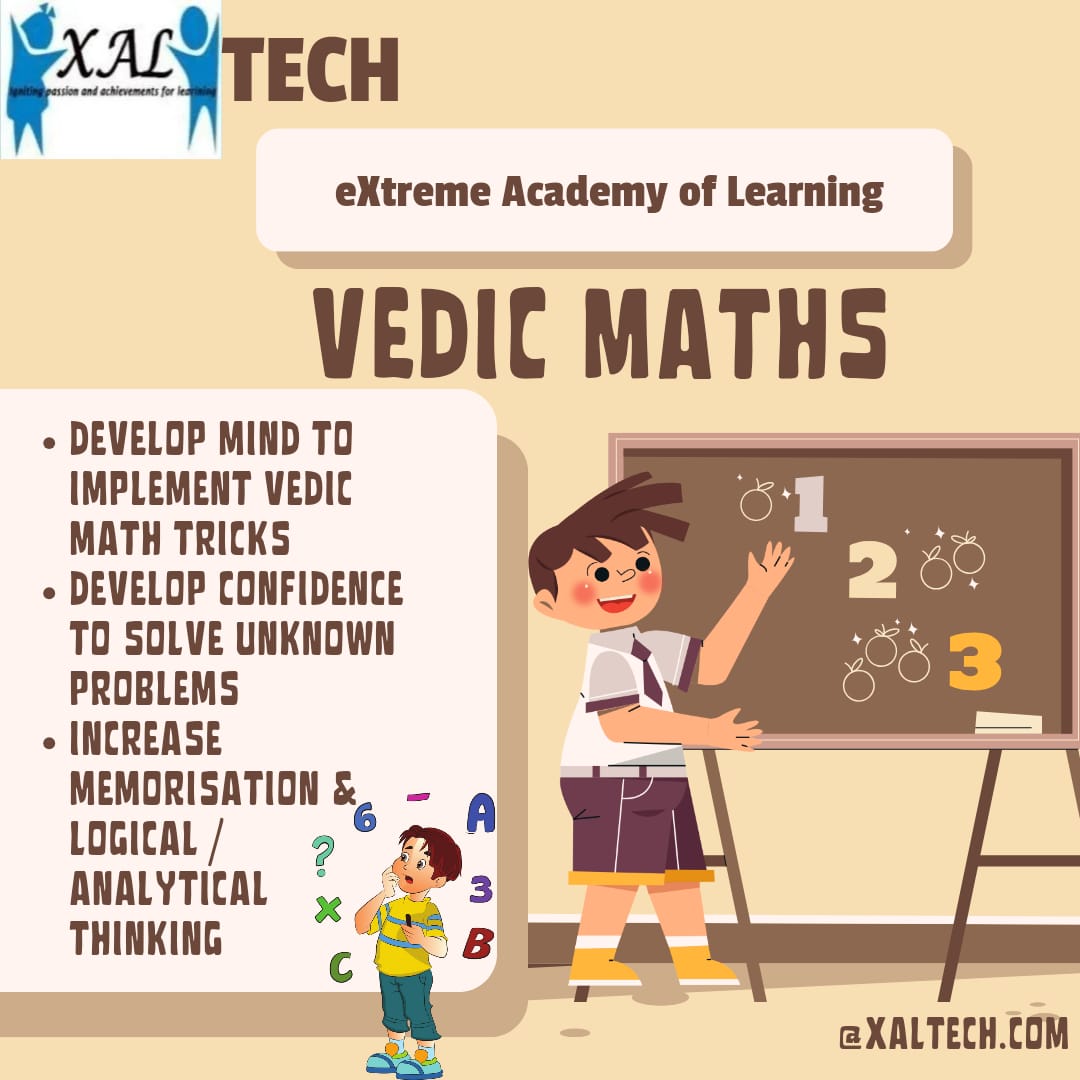Our Offerings
Phonics Program
-
Teaching Method: Phonics focuses on teaching
children to read and write by identifying and using different sounds
in the English language.
-
Key Techniques:
-
Pronouncing phonemes (sounds) associated with particular
graphemes (letters) in isolation.
-
Blending these sounds together to form words.
-
Example: Breaking down the word "cat"; into its sounds /k/, /æ/,
/t/ and blending them to form the word.
-
Benefits:
-
Helps children read almost every word.
-
Reduces the need to memorize words or spellings.
Abacus Program
-
Objective:Enhance brain power and upgrade brain
skills.
-
Focus Areas:
-
Visualization (photographic memory)
-
Method:
-
Using fingers of both hands to perform arithmetic calculations
stimulates both the right and left brain.
-
Benefits:
-
Higher academic performance across subjects.
-
Improved concentration levels
Vedic Mathematics
-
Overview:An ancient system of mathematics based on
sixteen Sanskrit mathematical formulae (sutras).
-
Applications:
-
Solving problems in arithmetic, algebra, geometry, and
trigonometry mentally.
-
Benefits:
-
Enhances numerical ability, focus, memory, and concentration.
-
Improves speed and accuracy in calculations.
-
Enhances intuition skills.
-
Helps in competitive exams preparation.
-
Reduces the need to memorize extensive multiplication tables (up
to nine only).
Python Programming
-
Importance:Python is a widely used programming
language in the high-tech industry.
-
Why Learn Python:
-
Easy to learn with simple syntax rules.
-
Suitable for young learners (as young as 9 or 10).
-
Extensive standard library and external libraries available for
various applications.
Tuition Services
-
Objective:Provide expert guidance to help students
excel in school academics.
-
Customization: Tuition can be tailored for all
subjects or specific subjects based on individual student needs.
-
Experienced Faculty: The academy boasts a team of
experienced mentors to provide quality education and support.
Chip Design
-
Importance: Chip design plays a crucial role in the
high-tech industry, enabling the creation of modern devices like
smartphones, computers, and IoT gadgets.
-
Why Learn Chip Design:
Foundation for Innovation:
-
Chip design introduces students to the core principles of
hardware and electronics.
-
Encourages problem-solving and creativity by designing
circuits and logic systems.
Real-World Applications:
-
Provides insights into how chips power everyday devices.
-
Connects theoretical concepts to practical technologies.
Engaging for Young Learners:
-
Concepts can be simplified through fun activities like
building basic logic gates or creating simple circuits.
-
Hands-on projects using tools like breadboards, Arduino, or
FPGA boards make learning interactive and exciting.
Future-Ready Skills:
-
Lays a strong foundation for careers in engineering, robotics,
AI, and IoT.
-
Familiarizes students with a high-demand field in the tech
industry.


